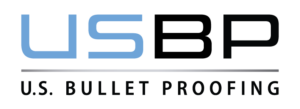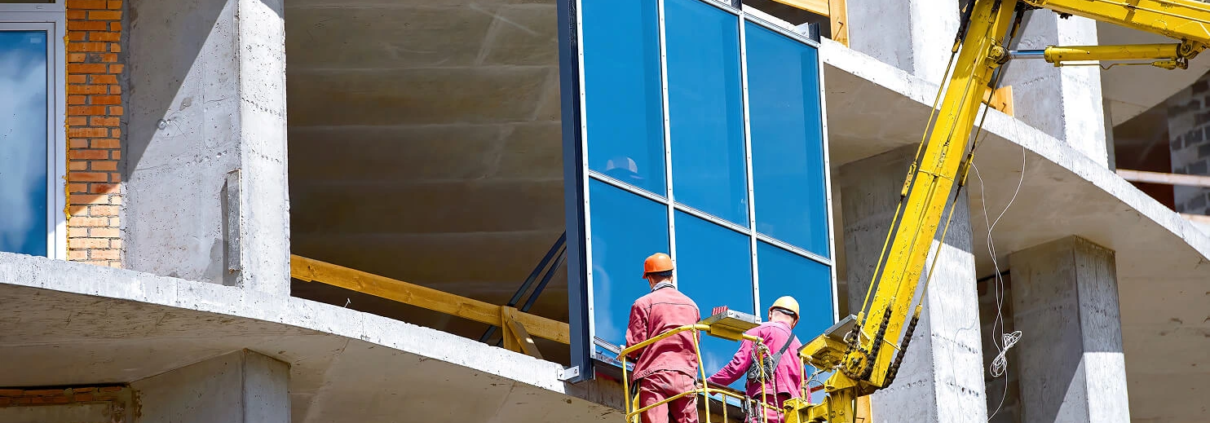Different Types of Curtain Wall Solutions and Systems
Curtain walls have become foundational to modern building design, offering visually striking facades that also deliver structural and environmental benefits. These non-load-bearing systems can protect the building envelope from weather and other threats (ballistic, blast, forced entry) while contributing to energy efficiency and aesthetics — a rare combination of form and function.
In this breakdown, we explore the different types of curtain walls, materials used, key design and installation considerations and how these systems support sustainability and cost-effectiveness across a building’s entire lifecycle.
Introduction to Curtain Walls
A curtain wall is an exterior building system that serves as a protective skin without bearing structural loads. Commonly used in high-rise and commercial architecture, curtain walls are valued for their light weight, energy performance and design flexibility. Their adaptability allows architects to incorporate unique shapes, finishes and configurations that align with both structural needs and aesthetic vision.
Key Benefits of Curtain Walls:
- Aesthetic Value: Their sleek, modern appearance enhances building design.
- Energy Efficiency: High-performance glass and framing options help regulate indoor temperatures.
- Natural Lighting: Expansive glazing promotes daylighting.
- Weather Resistance: They protect interiors from wind, rain and temperature swings.
Through integrating advanced thermal and glazing technologies, curtain walls have become vital in meeting the demands of both sustainable architecture and energy-efficient building envelope systems. Minimizing thermal bridging and improving air sealing also contributes to lower operational costs and improved indoor environmental quality.
Types of Curtain Walls
Choosing the right curtain wall system is integral to achieving architectural goals while meeting construction timelines and performance benchmarks. There are several curtain wall types, each suited to different building sizes, performance needs and installation requirements. Factors like building height, climate, budget, project complexity, security type and protection level all influence the optimal curtain wall type.
Stick Curtain Wall System
The stick system involves assembling individual components (mullions and infill panels) directly on-site. This method is particularly effective when logistics or budget constraints make factory-prefabricated systems impractical.
- Advantages:
- Lower initial material cost
- Greater flexibility for adjustments during construction
- Suitable for smaller projects or irregular site conditions
- Disadvantages:
- Labor-intensive installation
- Longer construction timelines
- Weather delays can disrupt assembly
Unitized Curtain Wall System
In this approach, curtain wall sections are prefabricated in a factory and delivered as large panels for on-site installation. This system streamlines installation in dense urban areas or on high-rise structures where speed and consistency are of the essence.
- Advantages:
- Faster assembly due to pre-built units
- Greater quality control from factory fabrication
- Better air and water tightness
- Disadvantages:
- Higher upfront manufacturing and transportation costs
- Requires crane access and staging space
- Less flexibility for last-minute design changes/li>
Ladder Systems and Modular Walls
These systems blend characteristics of stick and unitized curtain wall systems, allowing some pre-assembly while retaining adaptability. Ladder and modular options are often deployed across industries and spaces, ranging from government facilities to commercial complexes.
- Advantages:
- Balances the flexibility of stick systems with the efficiency of unitized systems
- Easier to transport and maneuver on constrained job sites
- Offers controlled fabrication for improved quality assurance
- Disadvantages:
- May not be suitable for extremely tall or irregularly shaped buildings
- Requires careful coordination between pre-assembly and field adjustments
- Hybrid nature can complicate scheduling and contractor roles/li>
Materials Used in Curtain Wall Construction
Curtain wall performance depends heavily on the materials used. Each material brings different strengths to a project, influencing everything from long-term energy use to compliance with green building standards.
Common Materials:
- Glass: Used extensively in glass curtain wall systems to enhance transparency and daylighting. Glass panels can be treated for UV protection, thermal resistance and even self-cleaning. They can also provide multi-threat protection from ballistics, blasts, storm impact and forced entry.
- Aluminum: Often the primary framing material due to its light weight, corrosion resistance and recyclability. Aluminum curtain walls offer excellent lifecycle performance and design flexibility. There are specialized security framing systems with deep glass pockets to support the weight and depth of high security glazing while providing a complete system that meets the required level of protection.
- Composite Panels: Versatile infill solutions when thermal performance or architectural styling is prioritized. These may include insulated panels, stone veneers or metal composites that provide extra insulation or aesthetics.
Material choice impacts sustainability, fire resistance, maintenance and cost, making it important to match material performance with project goals and climate conditions. For example, buildings in hurricane zones may benefit from reinforced aluminum frames, while structures in colder climates might require higher insulation values from their glazing systems.
Curtain Wall Design and Installation
Proper design and precise installation ensure that curtain walls perform as intended. Designers must consider environmental stressors, while installers must maintain precision.
Critical Design Considerations:
- Thermal Breaks: Reduce heat transfer and condensation.
- Wind and Seismic Loads: Systems must accommodate movement without compromising integrity.
- Aesthetic Integration: The façade must blend seamlessly with overall building design.
- Glazing Performance: Select glass types based on solar control, insulation and visibility needs.
Installation Best Practices:
- Engineering surveys and BIM modeling ensure compatibility with structural and mechanical systems.
- Fabrication follows precise tolerances, especially for unitized curtain wall systems.
- On-site installation includes mounting, sealing, waterproofing and performance testing.
Challenges such as misalignments, thermal bridging and air infiltration are mitigated through early coordination and experienced installers. Using mock-up testing, pre-construction modeling and phased quality checks can further reduce the risk of errors and ensure compliance with performance criteria.
Energy Efficiency and Sustainability
Curtain walls are instrumental in improving a building’s energy profile and aligning with green design standards. When integrated thoughtfully, curtain walls reduce operational energy demand, benefiting both regulatory compliance and long-term utility savings.
How They Help:
- Daylighting: High-transparency glazing reduces reliance on artificial lighting.
- Thermal Control: Insulated glass units (IGUs) and thermally broken frames reduce heat loss or gain.
- Green Certifications: Curtain walls contribute to LEED and WELL credits through energy savings and indoor environmental quality.
Emerging features include integrated shading systems, solar control coatings and even photovoltaic glazing — all of which reduce HVAC load and carbon footprint. Innovations like these not only support net-zero goals but also enhance comfort by moderating indoor temperatures and minimizing glare.
Maintenance and Lifecycle of Curtain Walls
Proper care extends the functionality and safety of curtain walls well past the initial investment; routine upkeep preserves visual appeal and safeguards structural performance and weather resistance over time.
Maintenance Recommendations:
- Quarterly Inspections: Check seals, gaskets and anchors for wear.
- Glass Cleaning: Maintain clarity and performance with regular professional cleaning.
- Frame Inspection: Monitor aluminum frames for corrosion or paint degradation.
Lifecycle Expectations:
With proper maintenance, curtain walls can last up to 30–50 years. This lifespan is affected by:
- Local climate and exposure
- Frequency of inspections and repairs
- Quality of original design and installation
Sustainability-minded facility managers often use lifecycle cost analysis to justify curtain wall investments — balancing capital expenses with operational savings and resale value. Forecasting future maintenance and upgrade needs helps owners to proactively budget and avoid costly surprises.
Balancing Security, Performance, Design and Efficiency
As energy codes tighten and expectations rise for modern buildings, curtain walls offer a future-proof strategy for elevating building envelope performance. From classic stick curtain wall systems to advanced unitized curtain wall solutions, understanding the nuances of each system enables better design and investment decisions.
For mission-critical and high-security facilities, U.S. Bullet Proofing’s bulletproof curtain wall systems and bulletproof windows offer added protection with uncompromised design. To learn more about our solutions, reach out to one of our experts today.


